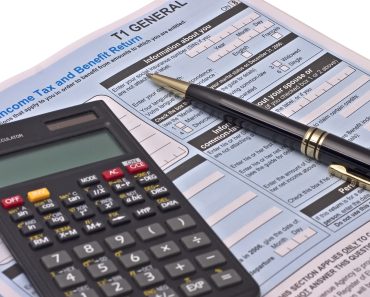
The TFSA limit for 2023 is set at $6,500 with an annual indexation to inflation. Canadians can open a TFSA to enjoy tax-free investment opportunities. Eligibility, contribution room, tax implications, and other considerations are important to understand. Individuals can access their TFSA information online, update contact details with the CRA, and track contributions and withdrawals. It’s crucial to avoid exceeding the contribution limit and to be aware of consequences. Non-residents of Canada and the taxable disposal of transferred investments have specific guidelines. Seek professional advice for financial decisions. For more detailed information, refer to additional CRA resources available.
Who is eligible to open a TFSA
Opening a TFSA (Tax-Free Savings Account) provides individuals in Canada with a valuable opportunity for tax-free investing. But who is eligible to open a TFSA?
In general, any Canadian resident who is 18 years of age or older can open a TFSA. This includes individuals who have a social insurance number (SIN) and are considered Canadian residents for tax purposes.
Non-residents, temporary residents, and individuals under 18 years old are not eligible to open a TFSA. It’s important to note that while non-residents cannot contribute to a TFSA, they can maintain any existing contributions and investment income in the account.
TFSA eligibility is not restricted to employment status, and both employed and self-employed individuals can open and contribute to a TFSA. Whether you work full-time, part-time, are on a leave of absence, or are retired, you can take advantage of the benefits offered by a TFSA.
It’s essential to understand the eligibility criteria and ensure you meet the requirements before opening a TFSA. By doing so, you can maximize your tax-free investment potential and enjoy the long-term benefits of this savings account.
TFSA contribution room
The TFSA contribution room refers to the amount of money an individual can contribute to their TFSA account without incurring any penalties or tax implications. Each year, the Canadian government sets a limit for the TFSA contribution room, which is indexed to inflation. In 2023, the contribution room is $6,500.
To find out your available contribution room, you can access your TFSA information online through the CRA website. It’s important to keep track of your contributions and withdrawals to ensure you stay within the allotted contribution room. Exceeding the contribution limit can result in penalties and tax consequences.
If you are unsure about your TFSA contribution room or have questions regarding your eligibility, it is recommended to seek professional advice. Financial planners or tax experts can provide guidance based on your specific circumstances to help you make informed decisions.
Understanding your TFSA contribution room is essential for maximizing the benefits of your TFSA account and making the most out of your tax-free investments.
Finding your TFSA contribution room information
Tracking your TFSA contribution room is essential to make informed financial decisions. To find your contribution room information:
- Access the CRA website and log into your account.
- Navigate to the TFSA section and select the “Contribution room” option.
- Your TFSA contribution room will be displayed, indicating the total amount you can contribute for the current year.
- Take note that your unused contribution room from previous years will also be listed.
It’s important to regularly check your TFSA contribution room to avoid overcontributing and incurring penalties. Remember that the contribution limit for 2023 is $6,500, which may increase over time due to inflation.
Authorizing a representative
When managing your TFSA, there may be occasions when you need someone else to handle certain tasks on your behalf. In such cases, you can authorize a representative to act on your behalf, granting them the necessary permissions to perform specific actions related to your TFSA.
Authorizing a representative involves completing the required forms and ensuring that they are submitted properly. These forms typically require details about your representative, including their name, contact information, and their relationship to you. Additionally, you may need to provide specific instructions outlining the tasks they are authorized to carry out.
It is crucial to choose a trustworthy representative who understands the responsibilities involved in managing a TFSA. Take the time to carefully consider your options and ensure that the person you authorize is capable and reliable. Keep in mind that authorizing a representative does not absolve you of your responsibilities as the TFSA account holder; you remain ultimately responsible for the actions taken on your behalf.
Be sure to maintain open communication with your representative and regularly review the activities performed on your TFSA. This will help you stay informed and ensure that your TFSA is managed in accordance with your financial goals and objectives.
Accessing your online mail
As a TFSA account holder, it’s important to stay updated on your account information and any correspondence from the CRA. Accessing your online mail through the CRA’s website provides a convenient way to receive and review important documents related to your TFSA.
To access your online mail, you’ll need to log in to your CRA My Account. Once logged in, navigate to the ‘Correspondence’ section to view any new mail items. The CRA sends notifications via email when new mail is available, so it’s crucial to keep your contact information up to date.
By regularly checking your online mail, you can stay informed about your TFSA contribution room updates, any notices from the CRA, and other important communications related to your TFSA. It’s advisable to review these documents carefully and keep track of any changes to ensure compliance with the TFSA rules and regulations.
Remember, accessing your online mail is a secure and efficient way to receive TFSA-related information. Make it a habit to check your online mail regularly to stay updated on your TFSA account.
Knowing your TFSA contribution room
Understanding your TFSA contribution room is essential for effective financial planning. Your contribution room refers to the amount you can contribute to your TFSA without incurring penalties.
To determine your contribution room, you need to consider several factors:
- Your unused contribution room from previous years
- The annual TFSA limit for the current year
- Any withdrawals you made from your TFSA in the previous year
- Any contributions made to your TFSA in the current year
You can find your TFSA contribution room information in multiple ways:
- Accessing your online mail through the CRA’s website
- Requesting a TFSA Contribution Room Statement
It’s crucial to keep track of your contributions and withdrawals yourself, as this information is not automatically updated by the CRA.
Remember, exceeding your TFSA contribution room can result in tax consequences, so it is important to stay within your limits. Seek professional advice for accurate guidance on managing your TFSA contributions and withdrawals.
Receiving your TFSA information
Once you have opened a TFSA account, it is important to stay informed about your TFSA contribution room and related information. The Canada Revenue Agency (CRA) provides various ways to receive your TFSA information:
- Online Mail: Access your TFSA-related correspondence securely through the CRA’s online services. Ensure that you keep your contact information updated to receive important notifications.
- Extract of TFSA Contribution Room: You can request an official statement called the Extract of TFSA Contribution Room. This document provides detailed information about your TFSA contribution room and helps you keep track of your contributions.
- Annual Notices: The CRA sends annual notices to inform you about your TFSA contribution room for the upcoming year. Be sure to review these notices to make informed decisions about your TFSA contributions.
By staying informed and regularly checking your TFSA information, you can effectively manage your contributions and maximize the benefits of your TFSA account.
About the TFSA account
The TFSA account, or Tax-Free Savings Account, is a valuable investment opportunity for Canadians. It provides individuals with a tax-free way to grow their savings and investments. Unlike other types of accounts, any income earned within a TFSA is not subject to taxes.
Contributions made to a TFSA are not eligible for tax deductions, but withdrawals are tax-free. This flexibility makes the TFSA account a popular choice for both short-term and long-term financial goals.
When opening a TFSA account, individuals should consider their investment objectives, risk tolerance, and time horizon. TFSA accounts can hold various types of investments, including cash, stocks, bonds, mutual funds, and GICs.
It’s important to note that contributions to a TFSA are subject to annual limits, such as the TFSA limit for 2023 of $6,500. It’s crucial to stay within these limits to avoid penalties and tax implications.
- The TFSA account provides tax-free growth and income.
- Contributions are not tax-deductible, but withdrawals are tax-free.
- TFSA accounts can hold a variety of investment options.
- Individuals must adhere to annual contribution limits to avoid penalties.
By utilizing the benefits of a TFSA account wisely and staying within the contribution limits, Canadians can maximize their savings and investments while enjoying the tax advantages it offers.
Tax implications for TFSA contributions
When it comes to contributing to your TFSA, understanding the tax implications is essential. Contributions made to a TFSA are not tax-deductible, meaning you cannot claim them as a deduction on your income tax return. However, the advantage of a TFSA lies in its tax-free growth potential. Any investment income earned within your TFSA, such as dividends or capital gains, is not subject to taxes.
It’s crucial to note that exceeding your TFSA contribution limit can lead to tax consequences. If you contribute more than your allowable limit, you’ll face a 1% penalty tax per month on the excess amount. Therefore, it’s important to keep track of your contributions and ensure you stay within the prescribed limit to avoid any unnecessary taxes.
Additionally, it’s essential to understand the tax implications if you’re a non-resident of Canada contributing to a TFSA. Non-residents are subject to a 1% tax on the fair market value of the TFSA if not complying with the contribution rules. As a non-resident, it’s vital to consult a tax professional to navigate the specific tax obligations and implications.
By carefully considering the tax implications for your TFSA contributions, you can maximize the benefits and ensure compliance with the tax regulations in Canada.
- TFSAs offer tax-free growth potential
- Contributions are not tax-deductible
- Exceeding the contribution limit results in penalty taxes
- Non-residents face unique tax obligations
TFSA contributions for non-residents
As a non-resident in Canada, you are still eligible to make TFSA contributions and take advantage of the tax-free savings opportunity. However, there are specific guidelines and tax implications to consider.
- Non-residents have a contribution limit of $6,500 for the year 2023.
- TFSA contributions made by non-residents are not tax-deductible.
- Any investment income earned within the TFSA is not subject to Canadian income tax.
- If you become a Canadian resident again, you can start accruing contribution room from the year you become a resident.
- Upon leaving Canada permanently, you can still keep your TFSA, but you won’t be able to make further contributions.
It’s essential to monitor your contributions and ensure you don’t exceed the TFSA limit since over-contributions result in penalties and tax liabilities. Seek professional advice to understand the specific tax consequences for your situation as a non-resident. The Canada Revenue Agency (CRA) provides additional resources and examples to help you navigate TFSA contributions as a non-resident.
Managing investments within a TFSA
Once you have opened a TFSA, you have the opportunity to manage your investments within this tax-free account. The TFSA provides flexibility in choosing various investment options to grow your savings. Here are a few key considerations:
- Diversification: To mitigate risks, it is advisable to diversify your TFSA investments across different asset classes such as stocks, bonds, mutual funds, or ETFs. This helps spread the risk and potentially enhance returns.
- Risk tolerance: Assess your risk tolerance before selecting investments for your TFSA. Consider your investment goals, time horizon, and comfort level with market volatility.
- Growth potential: While TFSA accounts are tax-free, they still offer the potential for growth. Investing in assets with higher growth potential can help maximize your returns over the long term.
- Regular monitoring: Keep track of your TFSA investments periodically to ensure they align with your financial objectives. Regular reviews will allow you to make any necessary adjustments based on market conditions or changes in your investment strategy.
It’s important to note that managing your investments comes with risks, and it’s prudent to seek advice from financial professionals who can provide personalized guidance based on your unique circumstances. By carefully managing your investments within your TFSA, you can work towards achieving your financial goals while taking advantage of the tax benefits this account offers. Remember, the TFSA contribution limit for 2023 is $6,500, providing ample room for your investments to grow tax-free.
Tracking your TFSA contributions and withdrawals
Keeping track of your TFSA (Tax-Free Savings Account) contributions and withdrawals is essential for managing your finances effectively. By maintaining accurate records, you can ensure that you stay within the TFSA contribution limit and avoid unnecessary penalties.
A few key points to consider when tracking your TFSA contributions and withdrawals:
- Record all contributions made to your TFSA, including regular contributions, transfers from other registered accounts, and any additional contributions like excess amounts carried forward from previous years.
- Note the dates and amounts of any withdrawals you make from your TFSA. Whether it’s a partial or full withdrawal, it’s crucial to document these transactions accurately.
- Keep track of any investment gains or losses within your TFSA. While losses cannot be claimed as tax deductions, gains may impact your contribution room in subsequent years.
Having a clear record of your TFSA contributions and withdrawals enables you to stay informed about your available contribution room and make informed decisions regarding your investment strategy. It also helps you avoid exceeding the TFSA contribution limit and facing potential tax consequences.
Remember, it is your responsibility to track and manage your TFSA contributions and withdrawals. By being diligent in maintaining accurate records, you can make the most of your TFSA and maximize your tax-free savings potential.
Consequences of exceeding the TFSA limit
It is essential to be aware of the consequences of exceeding the TFSA limit in order to avoid potential issues with the Canada Revenue Agency (CRA) and maximize your savings potential. If you contribute more than the allowable limit, you will be subject to penalties and taxes.
When you exceed the TFSA limit, the CRA will impose a tax of 1% per month on the excess amount until it is withdrawn. This tax continues to accumulate until the excess contribution is resolved. It is crucial to address any over-contributions promptly to avoid unnecessary fees.
Withdrawals from your TFSA will not restore the contribution room until the following calendar year. This means that if you have already maximized your TFSA for the year but make a withdrawal, you cannot immediately recontribute that amount without incurring penalties.
Additionally, if you wrongly label an eligible withdrawal as a contribution, it will count towards your contribution room, potentially leading to exceeding the limit. It’s important to accurately track your contributions and withdrawals to avoid any inadvertent breaches of the TFSA limit.
It is advisable to be diligent in managing your TFSA and staying within the contribution limits to avoid unnecessary taxes and penalties. Keeping accurate records of your TFSA activity and seeking professional advice if needed can help ensure compliance and optimize the benefits of your TFSA.
Transferring values to a TFSA
Transferring values to a TFSA is a convenient way to take advantage of tax-free growth. You can transfer various investments such as cash, stocks, bonds, and mutual funds into your TFSA. However, it’s important to consider the taxable implications of such transfers.
When transferring investments to a TFSA, it’s crucial to be aware of the taxable disposal of transferred investments. This means that any capital gains or losses incurred during the transfer will need to be reported on your tax return. It’s recommended to consult with a financial professional or tax advisor to understand the tax implications of specific investment transfers.
To initiate a transfer, you’ll need to contact your financial institution or broker and provide them with the necessary details. They will assist you in moving your investments into your TFSA account. It’s important to keep track of the transfer process and any relevant documentation for future reference.
Remember, transferring values to a TFSA allows you to benefit from tax-free growth, but it’s essential to understand the taxable implications and seek advice when needed.
Taxable disposal of transferred investments
When transferring investments to a TFSA, it’s important to understand the tax implications associated with the taxable disposal of these transferred investments. Any gains or losses incurred during the transfer may be subject to taxation.
Upon transfer, the investments are considered disposed of at their fair market value. If there is a gain, it may be taxable, and if there is a loss, it may not be claimable. It’s crucial to consult a professional tax advisor to determine the tax consequences specific to your situation.
It’s also important to note that any income generated within the TFSA, such as dividends or capital gains, remains tax-free. However, when withdrawing or disposing of these investments, proper reporting must be done to ensure compliance with tax regulations.
Be aware of the potential taxable implications when transferring investments to a TFSA, and seek professional advice to navigate the tax landscape effectively.
Additional resources for TFSA information
- TFSA Guide: The CRA provides a comprehensive guide on TFSA rules, contribution limits, and tax implications on their official website.
- TFSA Calculator: Use the CRA’s TFSA Calculator to determine your remaining contribution room and potential growth over time.
- TFSA Frequently Asked Questions (FAQs): Find answers to common queries about TFSA contributions, withdrawals, and eligibility on the CRA’s FAQ page.
- TFSA Examples: The CRA offers practical examples illustrating various TFSA scenarios to help you better understand its application.
- TFSA Forms: Access necessary forms, such as TFSA Account Application and TFSA Transfer Authorization, directly from the CRA’s website.
- Personalized Assistance: Contact the CRA’s dedicated TFSA helpline or visit a local CRA office for personalized assistance related to your TFSA inquiries.
These resources provide valuable information, tools, and assistance to ensure you make informed decisions regarding your TFSA. Stay informed and utilize these resources to maximize the potential of your tax-free savings account.
TFSA contribution limit for the year 2023
The TFSA contribution limit for the year 2023 is set at $6,500, which has been indexed to inflation. This means that eligible individuals in Canada can contribute up to $6,500 to their TFSA accounts for the year 2023 without incurring any taxes on the investment growth or withdrawals.
Contributions to a TFSA are not tax-deductible, but the investment earnings within the account are tax-free. It’s important to note that unused contribution room from previous years can be carried forward, allowing individuals to accumulate additional contribution room over time. As of 2023, the cumulative TFSA contribution room can reach up to $88,000.
- TFSA contribution limit for 2023: $6,500
- Indexed to inflation
- Unused contribution room from previous years can be carried forward
- Cumulative TFSA contribution room can reach up to $88,000
By understanding and utilizing the TFSA contribution limit, Canadians can maximize their tax-free savings and investment growth opportunities. It’s recommended to stay informed about any changes to the contribution limit and seek professional advice when making financial decisions.
Professional advice for financial decisions.
When it comes to making financial decisions regarding your TFSA, seeking professional advice is crucial. A qualified financial advisor can provide valuable insights tailored to your unique circumstances and goals.
They can help you navigate through the complexities of TFSA contribution limits, tax implications, and investment options. With their expertise, you can make informed decisions to maximize the benefits of your TFSA while minimizing any potential risks.
Whether you’re considering opening a TFSA, managing your contributions and withdrawals, or exploring investment opportunities within your TFSA, a trusted advisor can offer guidance and recommendations based on your risk tolerance and financial objectives.
Additionally, they can assist with tax planning strategies, ensuring you are fully aware of any tax advantages and implications related to your TFSA. They can also provide personalized advice on how to achieve your long-term financial goals using your TFSA effectively.
Remember, the information provided here is valid as of 2023 and should not substitute professional advice. Engaging the expertise of a financial advisor can help you make informed decisions and optimize the potential of your TFSA.






